Medical expert of the article
New publications
Preparations
Osteochondrosis pills.
Last reviewed: 03.07.2025

All iLive content is medically reviewed or fact checked to ensure as much factual accuracy as possible.
We have strict sourcing guidelines and only link to reputable media sites, academic research institutions and, whenever possible, medically peer reviewed studies. Note that the numbers in parentheses ([1], [2], etc.) are clickable links to these studies.
If you feel that any of our content is inaccurate, out-of-date, or otherwise questionable, please select it and press Ctrl + Enter.
Osteochondrosis should always be treated comprehensively, and after a thorough examination of the patient by a vertebrologist and neurologist. You should not delay the treatment of this disease, as it can provoke the development of serious complications: headaches and migraines, intervertebral hernias, sciatica and lumbago.
Indications osteochondrosis pills.
If you feel that you have at least one of the symptoms of osteochondrosis (sharp pain in the back and chest area, dizziness, numbness of the fingers, pain in the cervical spine), you must immediately seek help from a specialist. Only he can prescribe effective tablets for osteochondrosis.
Pharmacodynamics
Let's consider the pharmacodynamics and pharmacokinetics of tablets for osteochondrosis using the example of the popular drug "Diclofenac".
This remedy has an antipyretic, anti-inflammatory, analgesic effect. The active substance diclofenac sodium non-selectively inhibits cyclooxygenase, which disrupts the metabolism of some acids, including arachidonic. Due to this, the amount of prostaglandins at the site of inflammation is significantly reduced.
Pharmacokinetics
Complete and rapid absorption of the drug, but it may slow down with simultaneous food intake. The amount of the substance in the plasma depends on the dosage. With repeated administration, the pharmacokinetic properties do not change.
Bioavailability is 50%. Diclofenac sodium binds to plasma proteins by 99%. It can also penetrate into synovial fluid. During the first pass of the substance through the liver, 50% is metabolized. If the patient is diagnosed with liver or kidney failure, the metabolites are excreted with bile. Penetrates into breast milk.
Dosing and administration
Of course, you won't be able to cure this disease completely with pills alone, but they are an important component of complex therapy. Among the main medicinal methods of combating osteochondrosis, we can highlight drugs with various active substances that help improve blood circulation, relieve spasms in the back muscles and reduce pain:
- Analgesics or painkillers.
- Antispasmodics.
- Drugs with anti-inflammatory effect.
- Chondroprotectors.
You can find a huge number of different medications in pharmacies, but which ones are better? Let's look at the most popular pills for osteochondrosis:
- Protecon.
- Traumeel.
- Various vitamin complexes.
- Nicotinic acid.
Protekon
A nonsteroidal anti-inflammatory drug used to treat and prevent osteochondrosis. The drug contains the following active ingredients: glucosamine sulfate and chondroitin sulfate. Due to this composition, this product has a regenerating effect on cartilage tissue. It has an analgesic and anti-inflammatory effect.
The standard dosage for adult patients is one tablet three times per 24 hours. The course of treatment is three months, unless the doctor prescribes another duration of therapy. If necessary, it can be taken in combination with other analgesics.
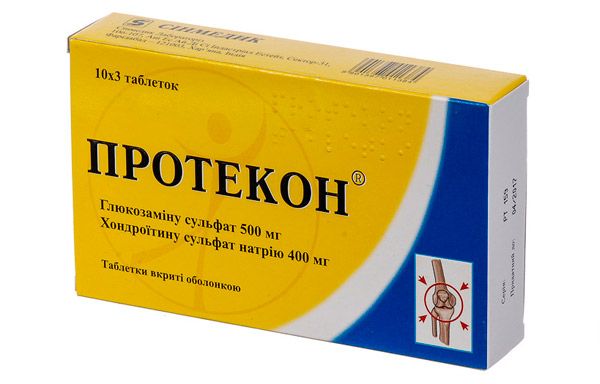
Patients with intolerance to the components of the drug, phenylketonuria, thrombophlebitis, bleeding are prohibited from drinking the drug. Do not use for the treatment of pregnant women or women who breastfeed. Do not prescribe if the patient has been diagnosed with diabetes.
Protekon is tolerated quite well, but some patients may experience allergic reactions, headaches, drowsiness, diarrhea, nausea.
Traumeel
A popular homeopathic remedy that is actively used to treat inflammatory diseases of the spine, as well as its injuries. The medicine contains the following active ingredients: calendula officinalis, arnica montana, achillea millephonium, witch hazel virginiana, aconitum napellus, atropa belladonna, hepar sulfuris, mercurius sollubilis, symphytum officinale, chamommila recutita, bellis perennis, hypericum perforatum, echinacea purpurea.
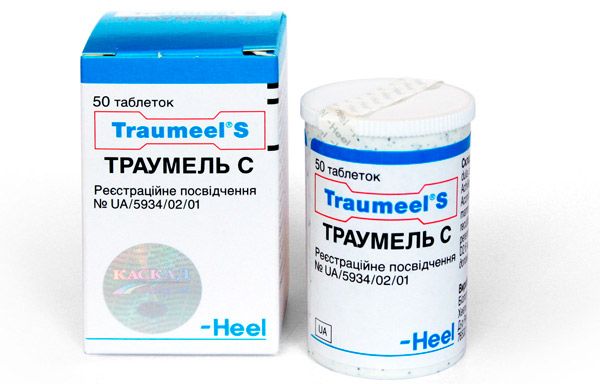
The standard dosage for the treatment of osteochondrosis is one tablet three times per 24 hours. The drug should be taken before meals (not earlier than 15 minutes). The tablet should not be swallowed or chewed, only kept in the mouth until it is completely dissolved.
Patients with leukemia, tuberculosis, lactose intolerance and intolerance to the components of the drug, multiple sclerosis, AIDS are prohibited from taking the drug. It cannot be used to treat children under twelve years of age. For the treatment of pregnant women, it is important to first consult with the attending physician.
In rare cases, the drug may cause allergic reactions and increased salivation.
Vitamins for osteochondrosis
Vitamins are divided into two large groups:
- Fat-soluble (vitamins K, D, E, A).
- Those that dissolve in water (vitamins B and C).
Patients with osteochondrosis are usually prescribed whole vitamin complexes to improve the patient's condition and make the therapy more effective. But at the same time, it is best to pay attention to vitamins that are part of group B (B12, B1, B6). With their help, you can reduce the strength of pain that appears in the back area, as well as to reduce neurological disorders and tissue trophism disorders.
In addition to vitamins, when treating osteochondrosis, it is also necessary to take various micro- and macroelements: zinc, potassium, phosphorus, magnesium. Thanks to them, bone tissue is strengthened, blood supply to the musculoskeletal system and the muscular frame of the spine is improved. As a rule, most mineral components are included in vitamin complexes. Remember that they are selected by the attending physician, based on the individual characteristics of the human body. The most popular vitamin complexes today are:
- Duovit.
- Complivit.
- Vitrum.
- Oligovite.
- Pentovit.
- Centrum.
- Decamevit.
- Unicap.
- Calcium D3-Nikomet.
- Supradin.
On average, vitamin therapy lasts about one month, although the doctor may extend this course if necessary. It can be repeated after three months.
Nicotinic acid
Nicotinic acid belongs to a group of drugs that are vitamin derivatives. Thanks to this medicine, the patient can:
- Normalize metabolic processes, strengthen the nervous system.
- Improve lipid and carbohydrate metabolism.
- Normalize blood supply to the brain.
- Expand blood vessels, normalize vascular tone.
- Cleanse the body in case of poisoning.

Nicotinic acid has a fairly wide application in medicine, but most often it is prescribed for the treatment of osteochondrosis of the spine. Nicotinic acid is sold in various forms, but tablets are considered the most popular.
It is recommended to take nicotinic acid for osteochondrosis and prevention of this disease at least twice a year (in spring and autumn). The dosage of the drug may vary (it depends on the severity of the disease and the patient's condition), but usually patients take one or two tablets three times in 24 hours. If you have increased stomach acidity, it is better to take the tablets after meals. It is recommended to wash it down with water or milk.
 [ 16 ]
[ 16 ]
Tablets for dizziness in osteochondrosis
Most often, dizziness with osteochondrosis occurs after sleep. Especially if the patient sleeps on a pillow that is too high, or throws back or turns his head sharply. Dizziness is often provoked if the patient turns his head in different directions. It can last for several minutes or even hours. This happens because in patients with osteochondrosis, the arteries are compressed by the vertebrae.
There are many methods of treating dizziness with osteochondrosis, all of them are complex. Most often, doctors prescribe various chondroprotectors that help restore cartilage. Often, the complex also includes vasodilators that help relieve dizziness and headaches that often accompany them.
Also, specialists often prescribe medications that help improve the functioning of the vestibular apparatus and blood microcirculation, anti-inflammatory drugs to relieve inflammation and swelling between the vertebral discs.
Trental
An angioprotector that helps improve blood microcirculation and increases the elasticity of red blood cells. Often used for dizziness in patients with osteochondrosis.
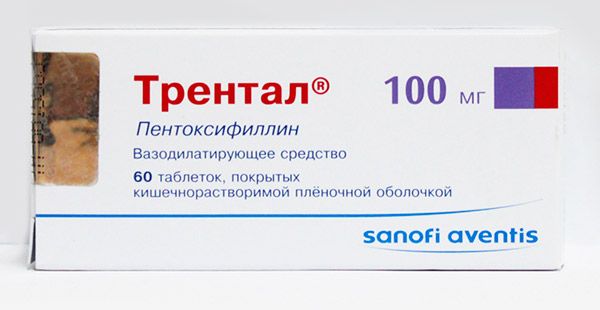
The dosage, as well as the duration of therapy, is determined by the attending physician. Patients with acute myocardial infarction, hemorrhagic stroke, massive bleeding, retinal hemorrhages, arrhythmia, atherosclerosis and intolerance to the components of the drug are prohibited from using it. Breastfeeding should be stopped during treatment.
In some cases, the drug may cause hyperemia of the skin on the face, drowsiness or loss of sleep, brittle nails, loss of appetite, cholestatic hepatitis, scotoma, tachycardia, hypophyrbinosinemia, and allergies.
Actovegin
A product that helps activate tissue metabolism, improve trophism, and stimulate the regeneration process. The drug contains an active component, deproteinized hemoderivative from calf blood. Due to this, the drug helps enhance oxidation processes and improves oxygen consumption.
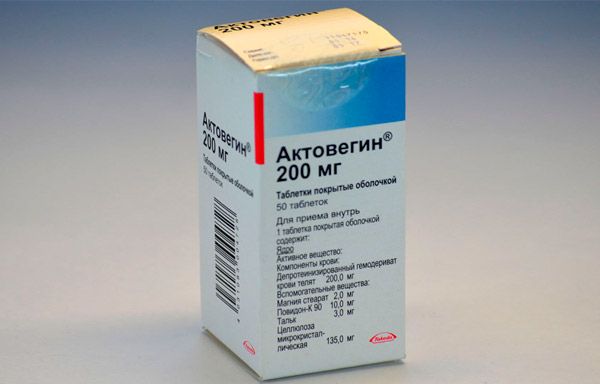
The standard dosage is one or two tablets three times per 24 hours. The medicine should be taken before meals. Wash down with plenty of liquid. The course lasts from four to six weeks.
Patients with heart failure, anuria, oliguria, pulmonary edema and hyperhydration should take with caution. It is prohibited to use if there is intolerance to the component of the drug. For treatment of pregnant women, you should consult a specialist.
In rare cases, taking the drug may lead to fever, swelling, and hives.
Tablets for headaches due to osteochondrosis
Headaches with osteochondrosis occur very often and can have different intensity: from insignificant to unbearable. It appears due to compression of arteries that pass along the spine by bone processes. The pain is bursting, it can become stronger if the patient moves the head or makes eye movements. The patient may experience nausea, as well as vomiting, weakness in the whole body.
Analgesics cannot cope with headaches caused by osteochondrosis. Therefore, doctors recommend taking pills that affect the symptoms of osteochondrosis. Due to severe attacks, headaches in patients with osteochondrosis are called "cervical migraine". Various warming ointments are a very good remedy for headaches caused by osteochondrosis.
Anti-inflammatory tablets for osteochondrosis
Anti-inflammatory tablets play a very important role in the treatment of osteochondrosis, since this disease is accompanied by the destruction of bone tissue and intervertebral ligaments and joints, which is accompanied by a strong inflammatory process and tissue swelling.
Nonsteroidal anti-inflammatory drugs, acting on different substances, suppress pain sensitivity. This group of drugs not only relieves pain, but also reduces fever, relieves inflammation and swelling.
Among the most popular anti-inflammatory tablets for osteochondrosis, it is worth highlighting:
- Diclofenac.
- Voltaren.
- Aspirin.
- Butadion.
- Indomethacin.
- Nimesulide.
- Ketoprofen.
 [ 17 ]
[ 17 ]
Diclofenac
A popular non-steroidal anti-inflammatory drug, which contains the active ingredient diclofenac sodium. It has not only an anti-inflammatory effect, but also relieves pain and fever.
The dosage is prescribed by the attending physician, but adult patients usually take 25-50 mg two or three times per 24 hours. Do not chew the tablets and take them with food. Once the therapeutic effect is achieved, the dosage should be gradually reduced. The maintenance dosage is 50 mg per 24 hours.
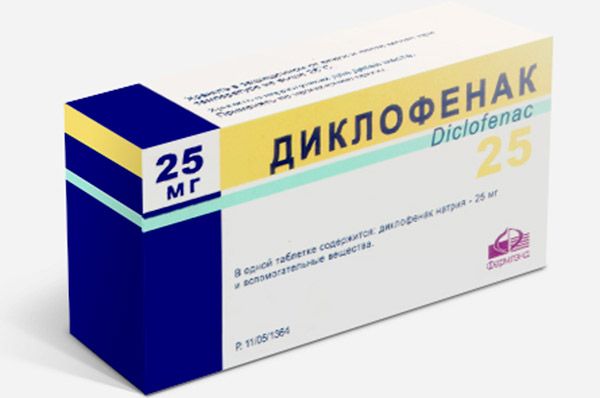
Patients with a high risk of developing gastric bleeding, erosions and ulcers, aspirin asthma, hematopoiesis disorders, hemophilia, intolerance to diclofenac are prohibited from taking the drug. It is not used to treat pregnant women, children (under six years old), women who breastfeed. If the patient has anemia, congestive heart failure, bronchial asthma, the drug should be taken with extreme caution.
In some cases, the drug may cause abdominal pain, diarrhea, constipation, jaundice, vomiting, liver necrosis, hepatitis, colitis, decreased appetite, cirrhosis, headaches, drowsiness, irritation, fear, tinnitus, diplopia, scotoma.
 [ 18 ], [ 19 ], [ 20 ], [ 21 ], [ 22 ]
[ 18 ], [ 19 ], [ 20 ], [ 21 ], [ 22 ]
Voltaren
Non-steroidal anti-inflammatory drug based on sodium diclofenac. It has anti-inflammatory, antipyretic and analgesic effects.
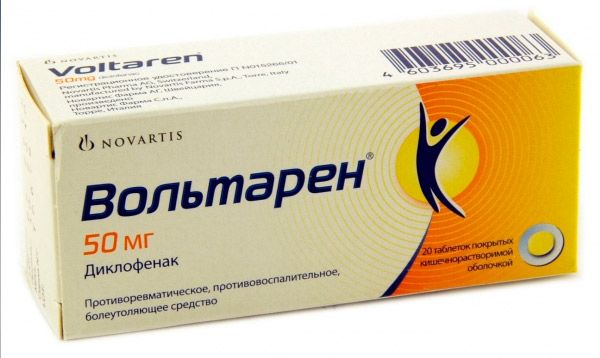
The dosage is individual, but doctors recommend taking the minimum effective dose. The standard dose is 100-150 mg per 24 hours. The tablets should be swallowed and washed down with plenty of liquid. Patients with stomach ulcers, inflammatory bowel diseases, bronchial asthma, renal or hepatic insufficiency, aortocoronary bypass, intolerance to diclofenac are prohibited from taking the drug. It is not prescribed for the treatment of pregnant women.
In some cases, taking the drug may be accompanied by nausea, abdominal pain, colitis, gastritis, vertigo, diplopia, headaches, convulsions, and allergies.
Aspirin
A popular remedy taken for osteochondrosis to relieve inflammation. The medicine contains acetylsalicylic acid. It has an antipyretic and analgesic effect. It inhibits cyclooxygenase enzymes, which participate in the synthesis of protaglandins.
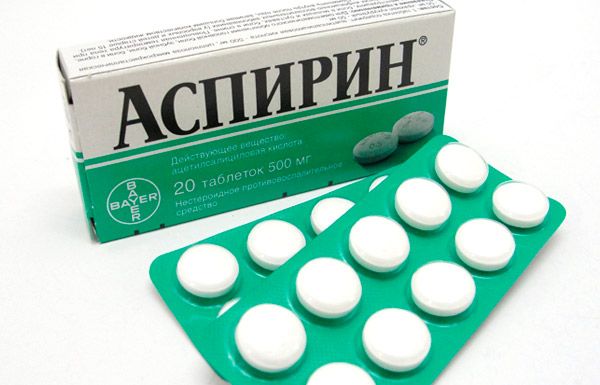
The drug can be taken from the age of fifteen. The standard dosage is 0.5-1 g at a time. There should be four-hour intervals between doses. You cannot take more than six tablets per day. You should drink plenty of liquid with the tablets during the intake. It is not recommended to take the drug for more than seven days.
Patients with gastric ulcer, hemorrhagic diathesis, bronchial asthma, intolerance to the components of the drug are prohibited from taking it. Do not take together with methotrexate. It is not recommended to prescribe to pregnant women (especially in the first and third trimesters of pregnancy).
In some cases, after taking the drug, nausea, diarrhea, headaches, high blood pressure, dizziness, and allergies may occur.
 [ 23 ], [ 24 ], [ 25 ], [ 26 ]
[ 23 ], [ 24 ], [ 25 ], [ 26 ]
Butadion
A popular anti-inflammatory drug based on phenylbutazone. Helps relieve swelling, inflammation, reduce fever and pain. Also available in ointment form.
It is recommended to take 0.2-0.4 g three to four times per 24 hours during meals. It can be taken to treat small children, but only after the doctor's prescription. The course of treatment lasts from two to five weeks, but can be extended if necessary.
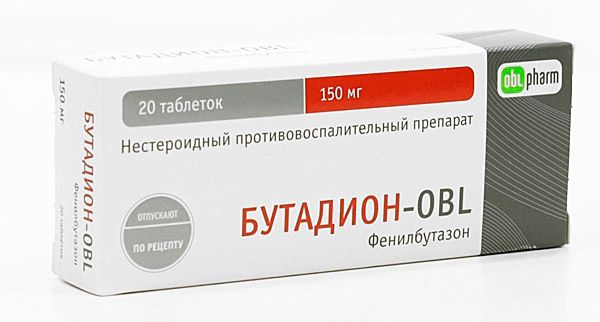
Patients with gastric ulcer, bone marrow depression, pulmonary or cardiac insufficiency, arterial hypertension, hemophilia, hypocoagulation, stomatitis, diabetes mellitus, intolerance to aspirin-type drugs and components of the drug should not take it. It is not recommended for use in pregnant women and during lactation.
May cause dyspepsia, gastropathy, nausea, diarrhea, heartburn, glossitis, headaches, tachycardia, leukopenia, abdominal cramps, uterine bleeding.
 [ 27 ]
[ 27 ]
Indomethacin
An anti-inflammatory drug based on an indoleacetic acid derivative. Reduces platelet aggregation. Has analgesic, anti-inflammatory, and antipyretic effects.
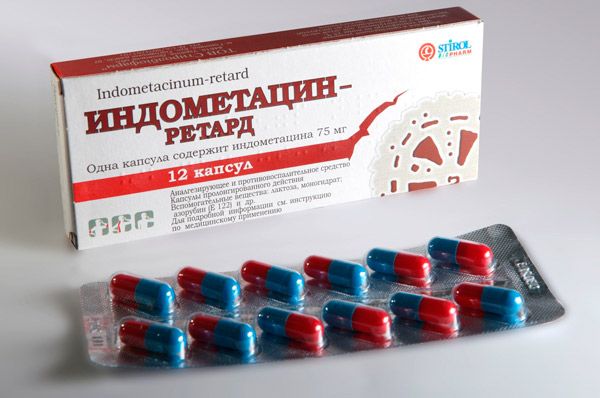
The dosage is prescribed individually depending on the severity of the disease and the patient's condition. The standard dose for treating adults is 25 mg two to three times per 24 hours. If the clinical effect is not achieved, the dose can be increased to 50 mg.
Patients with stomach ulcers, kidney and liver dysfunction, heart failure, pancreatitis, and intolerance to the components of the drug are prohibited from using it. It is not prescribed for the treatment of children under fourteen years of age and pregnant women.
In some cases, taking the drug can cause anorexia, abdominal pain, stomatitis, headaches, dizziness, convulsions, tachycardia, allergies, leukopenia, diplopia, hyperglycemia.
Nimesulide
An anti-inflammatory drug that is a selective COX-2 inhibitor based on nimesulide. It has antipyretic, antiplatelet and antipyretic effects.
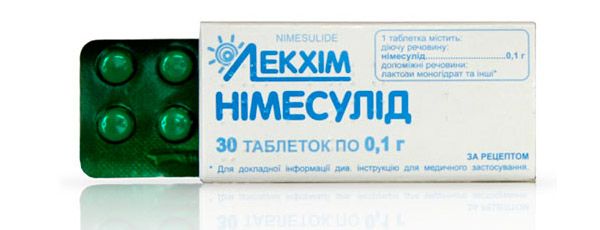
The dosage is individual and prescribed by the attending physician. The standard dose is 100 mg of the drug twice in 24 hours. It is necessary to drink after meals. Patients with bronchial asthma, stomach ulcers, stomach bleeding, Crohn's disease, hemophilia, heart failure, renal failure, hyperglycemia, intolerance to nimesulide are prohibited from taking the drug. It is not prescribed for the treatment of osteochondrosis in pregnant women, women who breastfeed, drug addicts and people suffering from alcoholism.
During the use of this drug, the following unpleasant symptoms and diseases may occur: anaphylactoid reaction, nervousness, headaches, Reye's syndrome, allergies, dysuria, oliguria, diarrhea, hepatitis, constipation, nausea, shortness of breath, hypertension.
Ketoprofen
An anti-inflammatory drug based on a derivative of propionic acid. It has a pronounced analgesic effect, has an antipyretic and anti-inflammatory effect.
The dosage is set for each patient individually, as it depends on the severity of his condition. The standard daily dose is 300 mg, which must be taken two or three times.
Patients with stomach ulcers, kidney and liver diseases, aspirin triad, intolerance to salicylates and ketoprofen should not use the drug. It is not recommended for pregnant women and children under fifteen years of age.
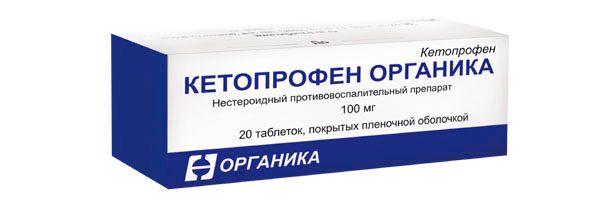
In some patients, taking this drug caused nausea, anorexia, vomiting, diarrhea, headaches, tinnitus, bronchospasms, and kidney problems.
Tablets for pain in osteochondrosis
It is very difficult to improve the condition of a patient suffering from osteochondrosis using just one method. But pharmacological agents play the most important role in any therapy.
Thanks to drug therapy, it is possible to cope with almost all the problems that arise with osteochondrosis:
- Eliminate severe pain.
- Relax your muscles.
- Relieve inflammation.
- Restore cartilage.
- Improve blood circulation.
Among the pills taken for osteochondrosis, painkillers occupy an important place. In cases where the pain is not very strong, even regular analgin can relieve it, but usually doctors prescribe stronger drugs to patients: Dexalgin, Ketorolac, Renalgan, Nise, Ketanov.
But it is worth understanding that painkillers do not affect the pathological process itself. They can only relieve muscle tension, improve activity, normalize sleep and the patient's emotional state. To eliminate not only pain, but also inflammation, it is necessary to take non-steroidal anti-inflammatory drugs.
Nise
An anti-inflammatory drug based on nimesulide. Relieves swelling, pain, and fever.
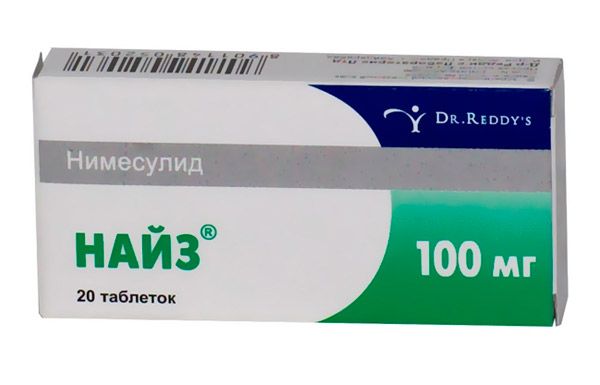
The standard dosage is 100 mg twice a day. Do not exceed the maximum dose of 400 mg. Take the tablets after meals. Patients with stomach ulcers, aspirin triad, liver disease, renal failure, dermatosis, intolerance to the components of the drug are prohibited from taking it. It is not recommended for pregnant women and those who are breastfeeding.
In some cases, taking Nise may lead to nausea, vomiting, diarrhea, dizziness, headaches, allergies, hematuria, thrombocytopenia.
Analgin
A popular analgesic, which contains an active component - a derivative of pyrazolone. It has anti-inflammatory, antipyretic, analgesic effects.
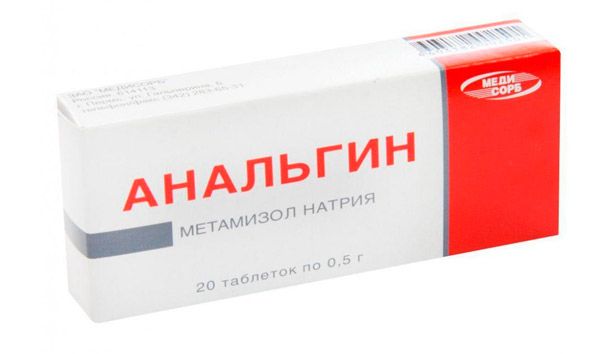
Take 250-500 mg two or three times per 24 hours. Do not exceed the maximum prescribed dose - 1 g. For children, a doctor's prescription is required, as the dosage is determined individually.
Patients with liver and kidney problems, glucose deficiency, blood diseases, intolerance to the main components of the drug are prohibited from using it. It can cause allergic reactions, leukopenia, agranulocytosis.
 [ 28 ]
[ 28 ]
Ketanov
Non-steroidal anti-inflammatory drug, derivative of pyrrolizine carboxylic acid. It has a pronounced analgesic effect. It also relieves inflammation, fever and swelling.
The standard dosage is 10 mg every four to six hours. If necessary, it can be increased to 20 mg three to four times in 24 hours. Patients with stomach ulcers, craniocerebral hemorrhages, kidney diseases, bronchial asthma, polyps, angioedema, intolerance to the components of the drug should not take it. It is not recommended for use in pregnant women, lactating patients, children under sixteen years of age.
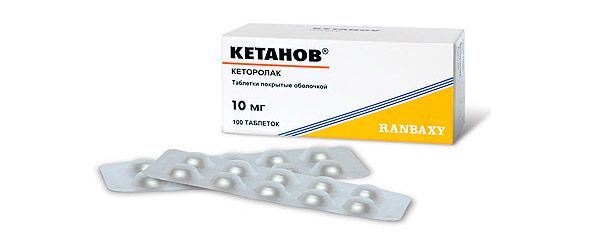
In some cases, taking Ketanov may lead to unpleasant symptoms and diseases: anxiety, paresthesia, euphoria, dizziness, nausea, bradycardia, fainting, asthma attacks, anemia, oliguria, hematuria, allergies, fever.
Tablets that relax muscles in osteochondrosis
One of the symptoms of osteochondrosis is the appearance of tension in muscles throughout the body. That is why muscle relaxants are very popular drugs in the complex therapy of this disease.
All of them can be divided into two large groups:
- Agents that act peripherally.
- Centrally acting drugs affect the central nervous system.
It is worth understanding that these drugs themselves do not have any therapeutic effect, but due to the fact that they relax the muscles, the patient can improve his condition. They should never be used independently. Remember that muscle relaxants are prescribed only by a specialist.
Among the most popular drugs in this group are:
- Baclofen.
- Cyclobenzaprine.
- Mydocalm.
Baclofen
A popular centrally acting muscle relaxant based on baclofen. Helps relieve muscle spasms. Also has a slight analgesic effect.
The standard dosage is 5 mg three times per 24 hours. It is recommended to take the tablets only during meals, with a sufficient amount of liquid. Every third day, the dosage is increased by 5 mg until the patient achieves a positive clinical effect. Do not exceed the maximum permissible dose - 100 mg.
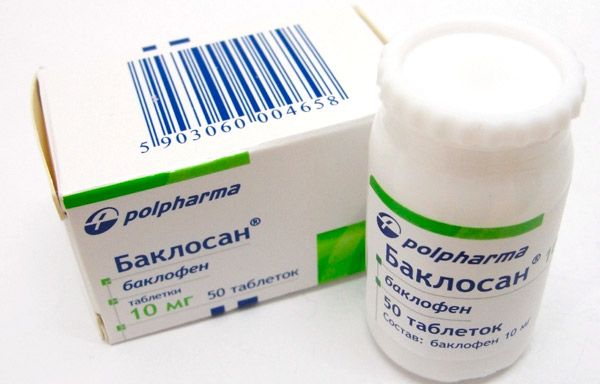
Patients with intolerance to the main component of the drug, epilepsy are prohibited from taking the drug. Do not use for the treatment of women who are breastfeeding or pregnant women. Side effects occur in all patients, so these tablets can only be taken under strict supervision of the attending physician and on his recommendation.
 [ 29 ]
[ 29 ]
Cyclobenzaprine
A popular centrally acting muscle relaxant containing the active ingredient cyclobenzaprine. It has a mild analgesic effect.
The standard dosage for treating adult patients is 20-40 mg two to four times per 24 hours. Do not exceed the maximum permissible dose of 60 mg.
Patients with intolerance to the components of the drug are prohibited from taking it. It is not used to treat pregnant women and during lactation. Side effects from taking this drug occur very often: allergy, hyperemia, rash, urination disorders.
 [ 30 ]
[ 30 ]
Mydocalm
A muscle relaxant based on tolperisone hydrochloride, which has an effect on the central nervous system. It has a local anesthetic and membrane-stabilizing effect.
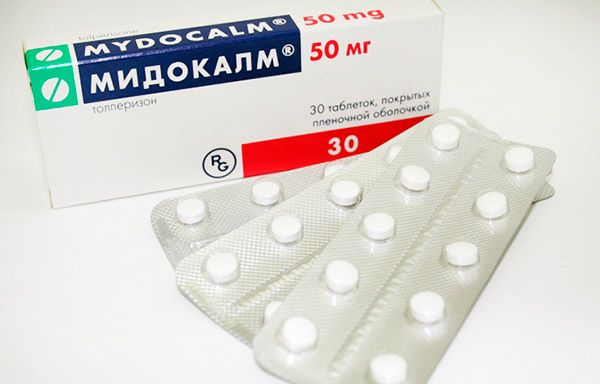
The standard dosage for treating adult patients (from the age of fourteen) is 50 mg two or three times per 24 hours. The dosage is gradually increased to 150 mg two or three times per 24 hours. For treating children, the dosage is determined by the attending physician. The tablets are taken orally with a sufficiently large amount of liquid.
Patients with myasthenia, intolerance to the components of the drug are prohibited from taking it. It is not recommended to use for treatment at an early age (up to three years), pregnant women, during lactation. It can cause arterial hypotension, muscle weakness, headaches, allergies, nausea, bronchospasms.
Use osteochondrosis pills. during pregnancy
Osteochondrosis is one of those serious diseases that must be treated before pregnancy. But even perfectly healthy women may develop osteochondrosis of the cervical spine during pregnancy. Pills that successfully treat any type of osteochondrosis are completely contraindicated for the treatment of pregnant women. This can be explained by the fact that they negatively affect the development of the fetus and the condition of the patient herself.
This is why, if a woman develops symptoms of osteochondrosis during pregnancy, various non-drug treatments are prescribed.
Attention!
To simplify the perception of information, this instruction for use of the drug "Osteochondrosis pills." translated and presented in a special form on the basis of the official instructions for medical use of the drug. Before use read the annotation that came directly to medicines.
Description provided for informational purposes and is not a guide to self-healing. The need for this drug, the purpose of the treatment regimen, methods and dose of the drug is determined solely by the attending physician. Self-medication is dangerous for your health.

